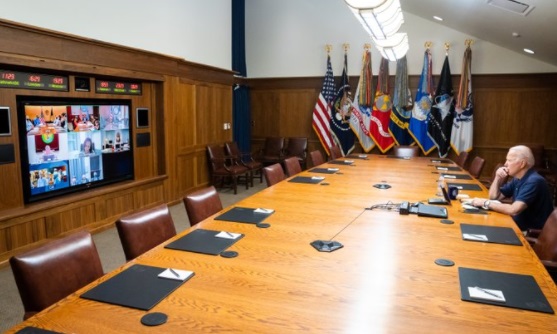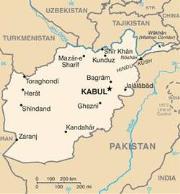Kabul NEO Planning

President Biden, while at Camp David, conducts a meeting with staff
about the Kabul NEO. (Photo by White House, August 15, 2021)
Planning for the NEO
The operation was mounted at the last possible minute and will be
used as an example by historians as to how not to conduct a noncombatant
evacuation operationr or NEO, at
least in the early stages of the operation. Certainly the
U.S. military personnel involved in the air and ground operations in
theater did a fine job, but the planning by the White House and State
Department appeared to be inadequate and
the execution at the last minute. Given the enormous capacity and
capability of the U.S. military it will certainly gain momentum and
provide the necessary results as long as the Taliban are cooperative.
After President Biden's public announcement that the U.S. would
withdraw from Afghanistan in April 2021 the Secretary of Defense Lloyd
Austin ordered Central Command (CENTCOM) to begin preparing for a
potential NEO in Afghanistan. The military prepostioned ground units,
naval vessels, and Air Force elements forward in the Middle East to be
prepared for a NEO. These additional forces would augment those already
in the region. In addition, DoD and CENTCOm conducted practice exercises
to review contingencies.
A NEO is triggered by an order by
the Department of State to conduct an evacuation. This order by DoS came
way too late - one day before the capital city of Kabul fell to the
Taliban.
The U.S. military had on the airport up to 1,000 troops. Once Kabul
was threatened the US made plans to dispatch an additional 3,000 troops to
increase the security posture at the airport. This would bring the total
to 4,000. On Sunday, August 16, 2021, it was determined that an
additional 2,000 troops would be needed bringing the total to 6,000 (and
possibly 7,000).
Deconfliction with the Taliban
The United States reached a deal with the Taliban to ensure that the
evacuations from the military side of the Kabul airport could proceed
without Taliban interference. The deal was reached during negotiations
in Doha, Qatar. General Frank Mckenzie, the U.S. Central Command
(CENTCOM) commander took part in the discussions. Representatives from
both sides at the local level are
conducting coordination multiple times a day on the passage of
personnel through checkpoints at the airport.
|




